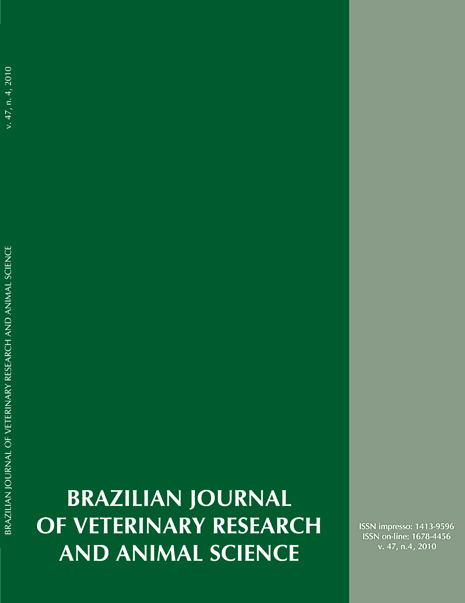Mandibular canal course determination by means of computerized tomography in ten mandibles of mesaticephalic dogs cadavers
DOI:
https://doi.org/10.11606/issn.1678-4456.bjvras.2010.26826Keywords:
Mandibular canal course, Computed tomography, Veterinary dentistry, Brachycephalic dogsAbstract
As it is known, during any surgical procedure in the human mandible, an iatrogenic damage to the neurovascular bundle that runs along the mandibular canal (MC) could cause from paresthesia to constant pain. In veterinary dentistry, different surgical procedures are performed on the bone tissue adjacent to the MC, which implies accurate knowledge of its localization. The purpose of this study was to determine by means of computerized tomography (CT) the path of the MC in relation with: lingual surface, vestibular surface, alveolar crest, and ventral mandible surface in ten mesaticephalic dogs. The slices were performed in transverse plane using as reference the mandibular foramen, the medial mental foramen and the tooth roots of molars and premolars; several measures among the MC and the mandibular faces were performed. The conclusion of this study was that from the 3rd molar tooth (following in rostral direction), the MC gradually increases its distance from the alveolar crest, reaching its maximum depth in the 1st molar tooth area. In the molar area, the MC was located nearly of the mandibular lingual surface. The CM continues rostrally occupying the ventral region of the mandible body keeping a similar distance between the buccal and lingual surface. Then in the 3rd premolar area the MC increases slightly its distance from the ventral aspect of the mandible, before its end in the medial mental foramen on the face of the mandible.Downloads
Download data is not yet available.
Downloads
Published
2010-08-01
Issue
Section
UNDEFINIED
License
The journal content is authorized under the Creative Commons BY-NC-SA license (summary of the license: https://
How to Cite
1.
Martinez LAV, Gioso MA, Lobos CMV, Pinto ACB de CF. Mandibular canal course determination by means of computerized tomography in ten mandibles of mesaticephalic dogs cadavers. Braz. J. Vet. Res. Anim. Sci. [Internet]. 2010 Aug. 1 [cited 2026 Jan. 18];47(4):274-81. Available from: https://revistas.usp.br/bjvras/article/view/26826





